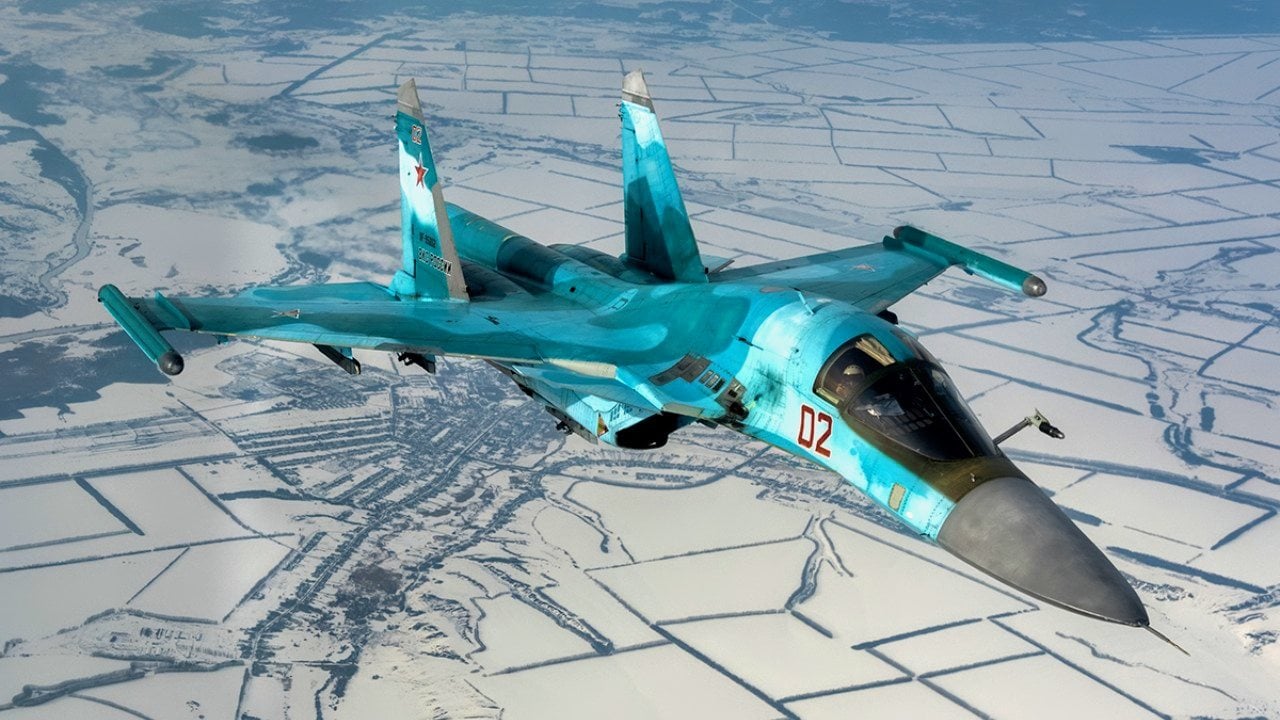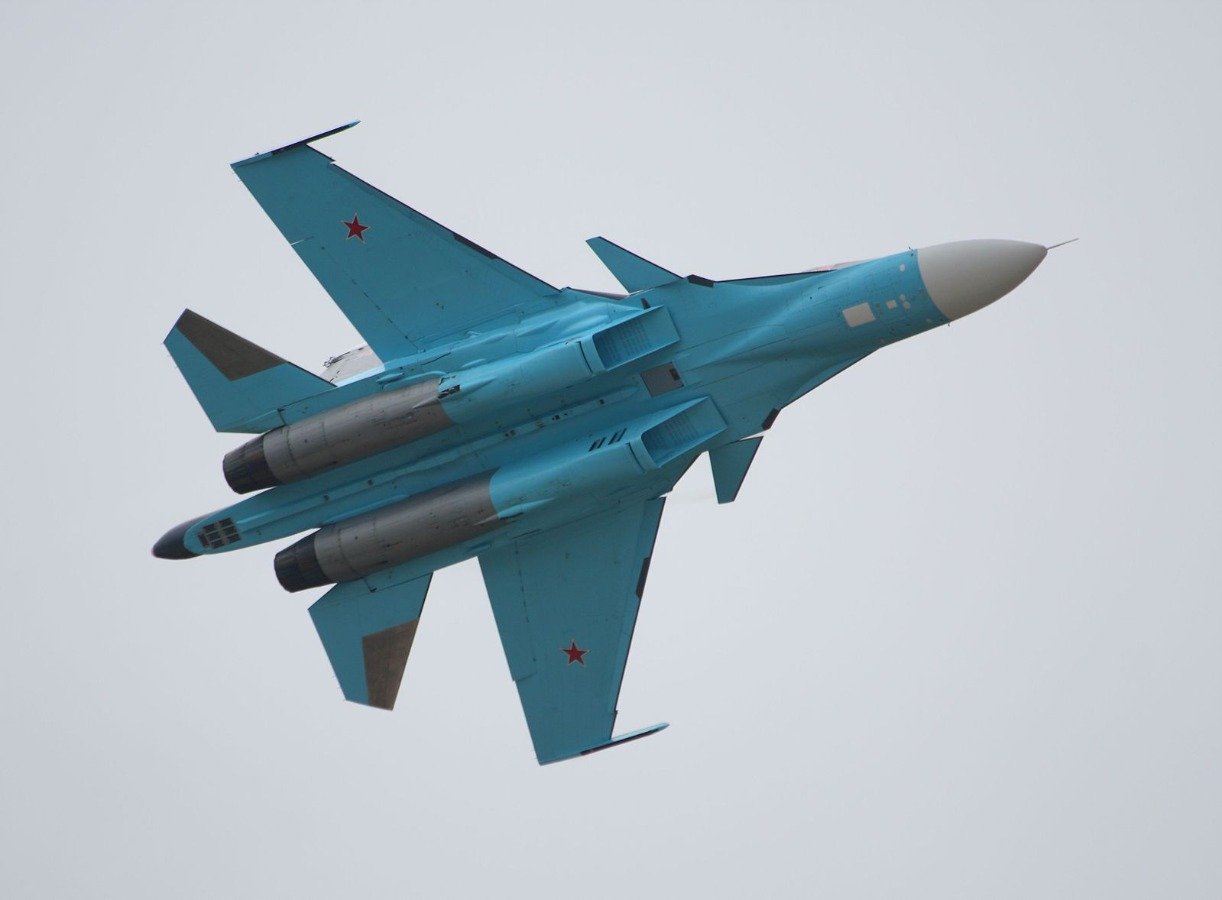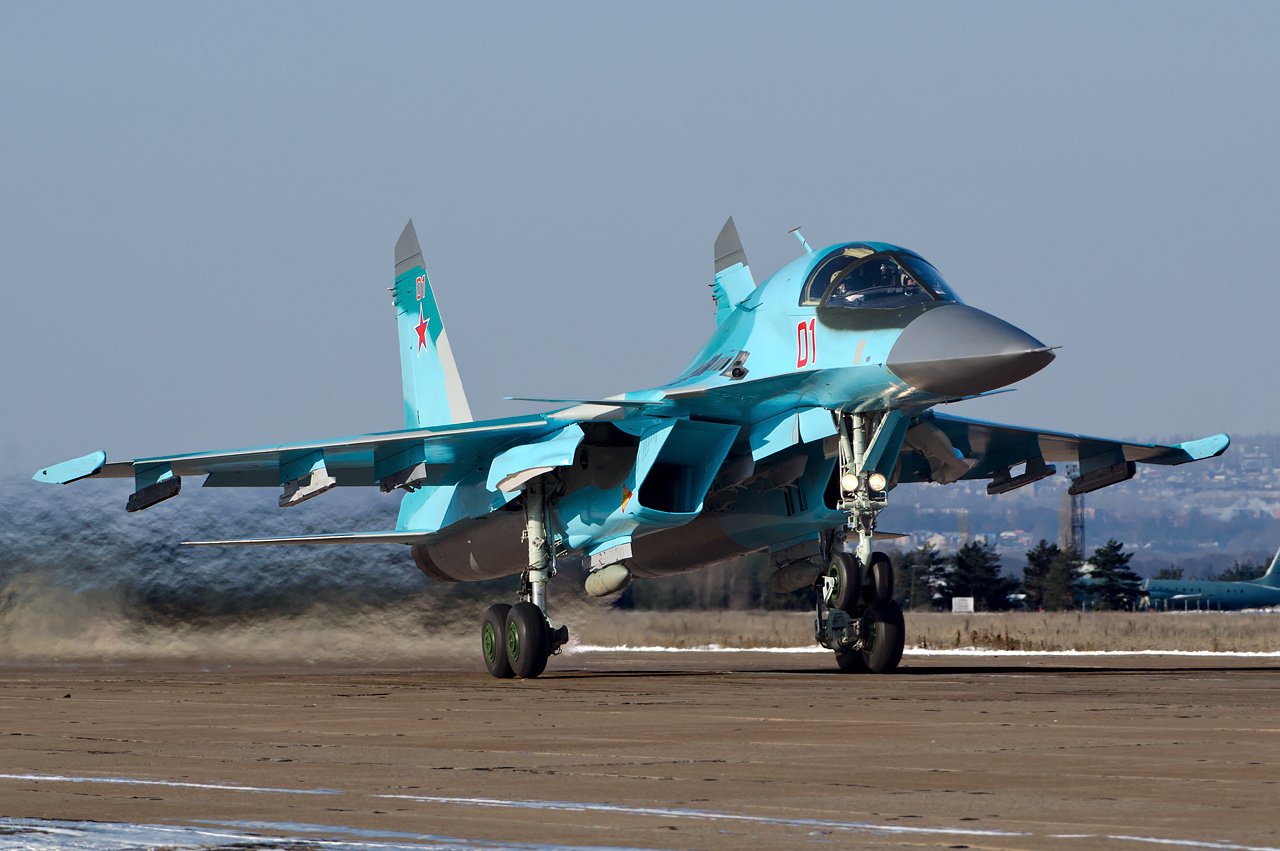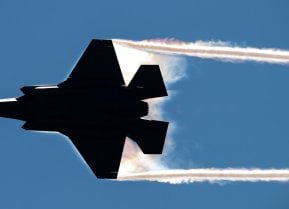Russia's Su-34 Fullback Fighter-Bomber Crashed Into a Mountain
The Russian Aerospace Forces lost a Sukhoi Su-34 Fullback during a training exercise in North Ossetia, with the aircraft crashing into a mountain and killing the crew.
Summary and Key Points: The Russian Aerospace Forces lost a Sukhoi Su-34 Fullback during a training exercise in North Ossetia, with the aircraft crashing into a mountain and killing the crew.

-This loss, unlike many others attributed to Ukrainian defense, highlights ongoing issues within the Russian military, including limited pilot experience, technical failures, and a shortage of spare parts due to sanctions.
-The Su-34, a highly capable fighter-bomber, was initially developed in the 1980s and entered service in 2014.
-Despite its advanced design and combat capabilities, including operations in Syria and Ukraine, the Su-34 continues to face significant operational challenges.
Russia's Su-34 has Even Bigger Problems
The Russian Aerospace Forces have one fewer Sukhoi Su-34 (NATO reporting name Fullback), and this time it didn't even cost the Ukrainian military a missile. While Kyiv's forces have claimed to have downed as many as three dozen of the all-weather supersonic fighter-bombers in the ongoing war, the Su-34 lost on Tuesday reportedly crashed into a mountain during a training exercise about 500 miles from the current front lines.
"In the Republic of North Ossetia-Alania, in a mountainous area, an Su-34 aircraft of the Russian Aerospace Forces crashed during a scheduled training flight," Russia's RIA state news agency cited a Kremlin statement, according to Reuters. "The plane crashed in a deserted area. There is no destruction on the ground. The crew was killed."

Though the Kremlin has seen dozens of aircraft losses in the more than two-year-long conflict, many of its warplanes have also been plagued by technical failures and mechanical issues, Newsweek reported. Aviation experts have previously told the magazine of record that many of the accidents could be the result of limited pilot experience. Even before the conflict began, many Russian pilots lacked hours in the cockpit, and the strains of the war have led to a drop in safety protocols.
In addition, analysts have pointed to the shortage of spare parts as a result of sanctions imposed on Russia following its unprovoked invasion of Ukraine.
The Su-34 Fullback is Down
The age of the Su-34 that crashed this week was not disclosed, but there is speculation it could be one of the latest batch of multirole strike aircraft delivered from the Novosibirsk Aircraft Production Association Plant earlier this year to replace combat losses.
The twin-engine, twin-seat, all-weather supersonic medium-range fighter-bomber was initially developed for the Soviet Air Forces in the 1980s. It was one of the Kremlin's many programs that were forced on the backburner following the dissolution of the Soviet Union and the economic crisis that followed. The program was only revived in earnest in the early 2000s, with eight pre-production aircraft built for trials and evaluations.
The Su-34 formally entered service in 2014 – although there are reports that it was employed during the Russo-Georgia War of 2008. Approximately 155 have been manufactured, including the prototypes and serial-produced aircraft.
Capable Warbird
The Su-34 has been touted as a highly capable aircraft. It is powered by a pair of Saturn AL-31FM1 turbofan engines, the same engines used on the Su-27SM, giving the aircraft a maximum speed of Mach 1.8+ when fully loaded. When equipped with a full weapons load, the Su-34 has a maximum range of 4,000 km (2,500 mi; 2,200 nmi), or further with aerial refueling. Its surface design includes a duckbill-shaped nose cone, two tail fins broadly reminiscent of the Su-27, canards to assist with maneuverability, and a side-by-side cockpit that can potentially facilitate improved communication between the two pilots.

Its modern glass cockpit features color multi-function displays, while its nose section accommodates a suite of advanced multi-mode phased array radar, capable of terrain following. The cockpit and other crucial components and systems are reported to be armored, while the Su-34 is fitted with comprehensive electronic countermeasures equipment. The aircraft has a rearward-facing radar and can launch air-to-air missiles at pursuing enemy aircraft. The fighter-bomber is also equipped with counter-fire and electronic warfare (EW) counter-measures systems.
The Su-34 typically carries 4,000 kg of weapons, while the maximum capacity is 8,000 kg. Its primary air-to-air weapon is the R-77 (AA-12) missile, with two R-73 (AA-11 or Archer) short-range air-to-air missiles carried on wingtip rails. For ground and naval strike roles, the Russian fighter-bomber can be armed with long-range standoff weapons, including the Kh-55, Kh-59, Kh-59M, Kh-25, Kh-29 air-to-surface missiles, Kh-31, Kh-35, Kh-41 Moskit, and P-800 Oniks anti-ship missiles, and Kh-58 anti-radiation missiles.

It is armed with a 30 mm GSh-301 cannon with 180 rounds, and the aircraft is equipped with 10 underwing and under-fuselage hardpoints for a wide range of weapons, including air-to-air, air-to-surface, anti-ship and anti-radiation missiles, guided or free-fall bombs.
The Su-34 has been employed on missions in Syria and Ukraine.
Author Experience and Expertise: Peter Suciu
Peter Suciu is a Michigan-based writer. He has contributed to more than four dozen magazines, newspapers, and websites with over 3,200 published pieces over a twenty-year career in journalism. He regularly writes about military hardware, firearms history, cybersecurity, politics, and international affairs. Peter is also a Contributing Writer for Forbes and Clearance Jobs. You can follow him on Twitter: @PeterSuciu. You can email the author: [email protected].
All images are Creative Commons or Shutterstock.


